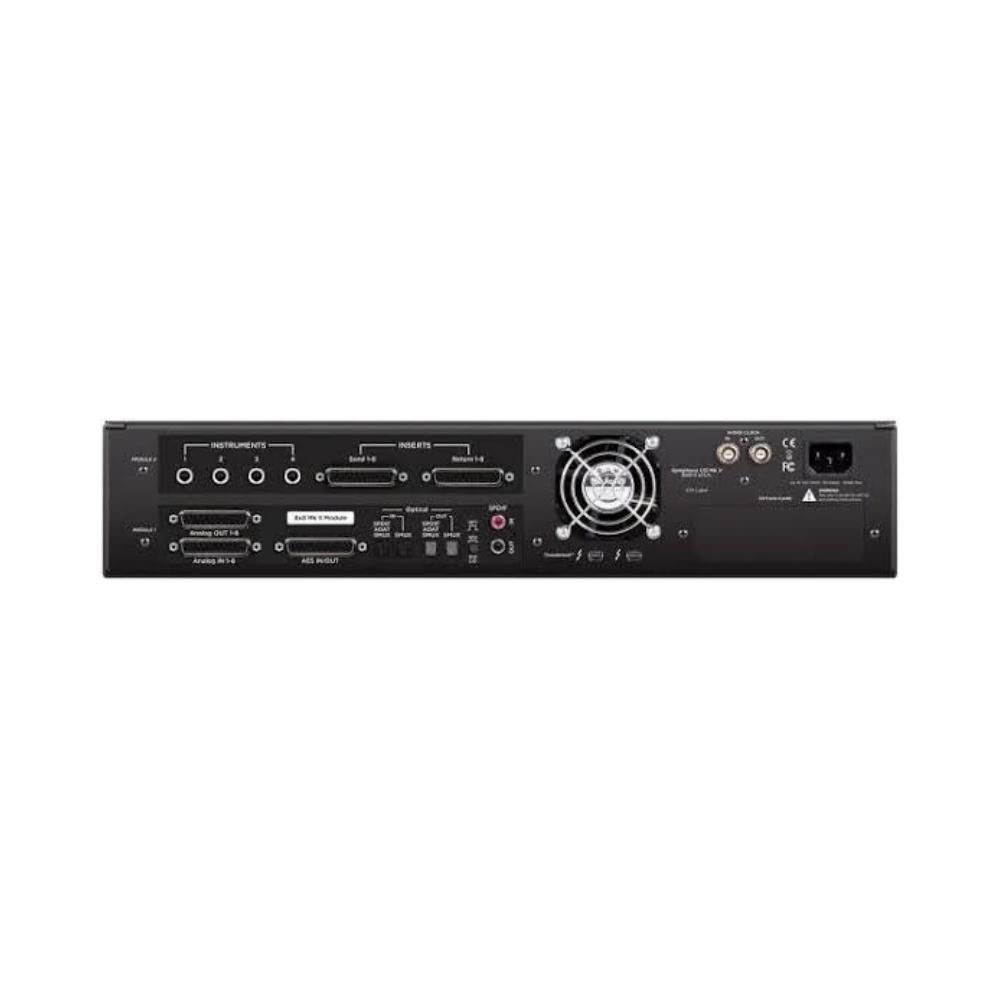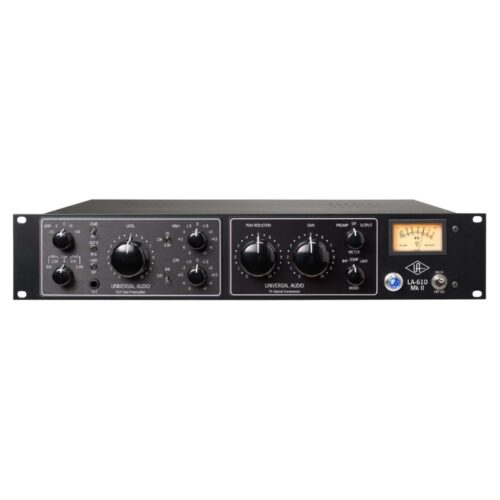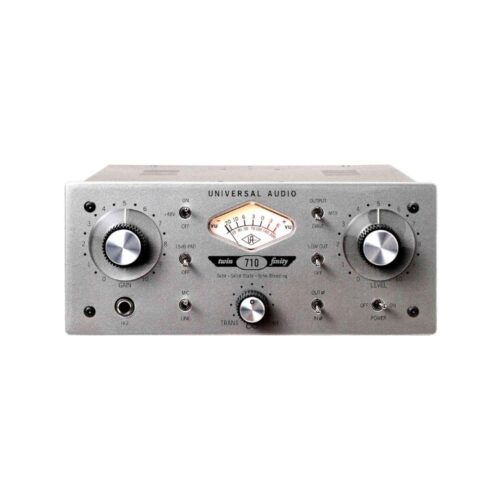Description
With their continually innovative designs and constant push for higher quality audio conversion, Apogee Digital has firmly cemented itself as one of the most recognized and industry-leading companies within the audio conversion world. Their newest flagship converter system, the Symphony I/O, continues their trend of introducing next generation converter technology with a smart and future proof modular design, plus an enhanced level of detail when compared to previous models. The result is a state-of-the-art converter system that is extremely customizable in terms of channel count, offers an very practical feature set, and provides an incredibly open and exciting sound that no other multichannel converter offers.
As mentioned, this is a modular converter system, meaning you have two available module/card slots where you can insert one of six available I/O modules. To ease any option paralysis, Apogee offers the Symphony in four different “out of the box” configurations: a 2 in 6 out setup (overdub studios/mastering suites), an 8 in 8 out mid-level setup, a larger 16 in 16 out setup, and an 8 in 8 out setup with 8 high quality mic preamps (this config fills both card slots). Every configuration also includes some form of digital I/O, though the amount of channels and connection type varies from module to module.
On top of those configurations you can pick up additional I/O modules for the second slot. In addition to the four different I/O cards just mentioned, there is also a 16 analog in with 16 digital out and a 16 analog out with 16 digital in. So essentially between those 6 different modules, you can customize and build any type of system to fit your needs – be them more tracking oriented, mixing or mastering oriented, or even location oriented. Unsure of what the best I/O configuration for you is? Give us a call! We frequently custom build Symphony systems and would be happy to assist with constructing a system that’ll best cover your channel count needs.
The tone of the Symphony continues Apogee’s tradition of adding a subtle amount of color, excitement, and polish to anything run through it. While it is incredibly subtle, I noticed while tracking an entire session through the Symphony, all of the tracks and instruments started to glue together very slightly since they all contained a similar ‘uniform tone.’ I can’t say it’s effect is identical to tracking to tape or mixing through a great sounding console as the texture is not nearly as defined, but the concept of “glueing” by applying a specific tone/color to all of your tracks is the same. Practically speaking, tracking and mixing through the Symphony system will remove the need for that one additional glue/polish processor you throw on your mix buss.
In addition to it’s great tone, the new technology and the quality of components found within the Symphony provides an enhanced level of openness and detail in the signal that, when compared to previous models, allows you to hear more information and experience a more defined stereo image. This ultimately results in a clearer and more defined mix since nothing is being hidden from you (you can’t mix what you can’t hear!). One thing worth noting if you’re using the Symphony as your monitoring D/A, there is a final stage of conversion color being added to what you’re hearing that’s not actually in the audio you’re playing back. As mentioned multiple times, this coloration is very subtle so by no means does this rule out it’s ability to be an excellent monitoring D/A, however it is something to be aware of.
All Symphony systems are ready to go out of the box with USB 2 connectivity as well as HD connectivity if you’re working on a Pro Tools HD system, be it HDX, HD Native, older HD2/3, or even a computer equipped with a Symphony 64 PCIe card. On top of that though is the option to pick up a Thunderbridge adaptor for true thunderbolt transfer speeds, not just Firewire or close to Firewire speeds running through a Thunderbolt connector like some other interfaces. This enhanced transfer speed gives you the ability to daisy chain multiple systems together and still obtain incredibly low latency on a very stable single platform.
In summary the Symphony system in one of the only pro level multi-channel converters that offers the customization, monitor control and headphone amps, high-quality preamps, and incredible conversion all in one chassis. It’s modular design is smart, future proof, and also gives you the option of building your setup and channel count over time.
INPUTS
Analog IN: 8 balanced inputs on 1 DSUB 25-pin connector
*AES-EBU IN: 8 inputs on 1 DSUB 25-pin connector
(192k single wide compatible)
*Optical IN: Supports ADAT, SMUX & S/PDIF
ADAT: 8 channels 44.1-48 kHz
SMUX: 8 channels 88.2-96 kHz
S/PDIF: 2 channels, up to 96 kHz
Coax IN: 2 channels of S/PDIF, up to 192 kHz
OUTPUTS
Analog OUT: 8 balanced outputs on 1 DSUB 25-pin connector
*AES-EBU OUT: 8 outputs on 1 DSUB 25-pin connector
(192k single wide compatible)
*Optical OUT: Supports ADAT, SMUX & S/PDIF
ADAT: 8 channels 44.1-48 kHz
SMUX: 8 channels 88.2-96 kHz
S/PDIF: 2 channels, up to 96 kHz
Coax OUT: 2 channels of S/PDIF, up to 192 kHz







